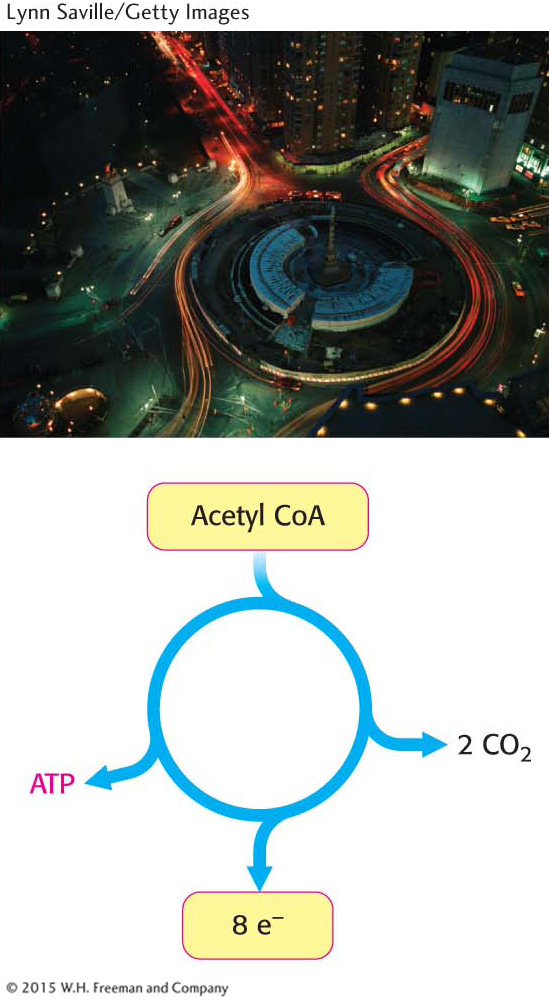The Citric Acid Cycle
329


You learned in Chapter 16 that glucose can be metabolized in glycolysis to pyruvate, yielding some ATP. However, the process of glycolysis is inefficient, capturing only a fraction of the energy inherent in a glucose molecule as ATP. More of the energy can be accessed if the pyruvate is completely oxidized into carbon dioxide and water. The combustion of fuels into carbon dioxide and water to generate ATP is called cellular respiration and is the source of more than 90% of the ATP required by human beings. Cellular respiration, unlike glycolysis, is an aerobic process, requiring molecular oxygen—
Cellular respiration can be divided into two parts. First, carbon fuels are completely oxidized with a concomitant generation of high-
The citric acid cycle is the central metabolic hub of the cell. It is the gateway to the aerobic metabolism of all fuel molecules. The cycle is also crucial for anabolism, serving as an important source of precursors for the building blocks of many other molecules such as amino acids, nucleotide bases, and porphyrin (the organic component of heme). The citric acid cycle component oxaloacetate also is an important precursor to glucose.
330
We begin this section by examining a crucial reaction in living systems: the conversion of glucose-
✓ By the end of this section, you should be able to:
✓ 1 Explain why the reaction catalyzed by the pyruvate dehydrogenase complex is a crucial juncture in metabolism.
✓ 2 Identify the means by which the pyruvate dehydrogenase complex is regulated.
✓ 3 Identify the primary catabolic purpose of the citric acid cycle.
✓ 4 Explain the advantage of the oxidation of acetyl CoA in the citric acid cycle.
✓ 5 Describe how the citric acid cycle is regulated.
✓ 6 Describe the role of the citric acid cycle in anabolism.